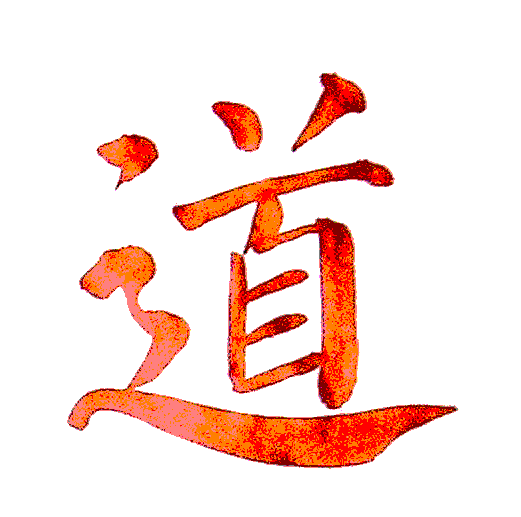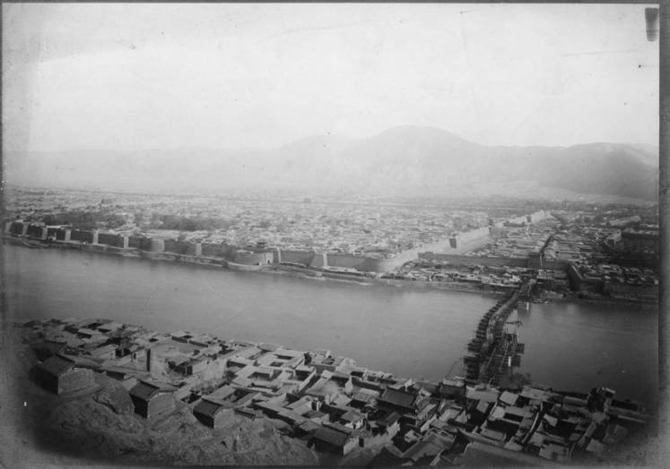|
Lü Jihong
Lü Jihong (; born June 27, 1960) is a Chinese singer. Biography On 27 June 1960, Lü was born in Tianshui, Gansu Province. He graduated from Xi'an Conservatory of Music in 1982. His teacher was Tao Liling (). After graduating, he worked in Lanzhou Normal School as a teacher. In 1985, Lü transferred to Gansu Song and Dance Troupe and the Chinese People's Liberation Army Naval Song and Dance Troupe The Central Military Commission Political Work Department Song and Dance Troupe (), formerly known as Chinese People's Liberation Army General Political Department Song and Dance Troupe (), is the official army choir of the Central Military Commi ... in 1989, where he started to learn the arts of music from Jin Tielin. Discography * ''The flower Fragrance'' () * ''The Communist Party, I want to say to you'' () * ''At This Very Moment'' () * ''Port of The Sunset'' () * ''Daban City's Nocturne'' () * ''In The Eyes of The World'' () * ''The Country Is Prosperous And The People Ar ... [...More Info...] [...Related Items...] OR: [Wikipedia] [Google] [Baidu] |
Lü (surname)
Lü () is the pinyin (Lǚ with the Tone (linguistics), tone diacritic) and Wade–Giles romanisation of a Chinese surname, most commonly (Simplified Chinese characters, simplified Chinese) and (Traditional Chinese characters, traditional Chinese). Romanization Lü is the standard pinyin spelling of the Chinese character 吕/呂. However, when input of the Umlaut (diacritic), umlaut is not possible, the surname is commonly romanized as Lu or Lv (v being the pinyin input shorthand for ü). On 31 October 2011, the National Standardization Committee of China issued ''The Chinese phonetic alphabet spelling rules for Chinese names'', which stipulates that Lü should be spelled Lyu in such situation. The rule came into effect on 1 February 2012. In Cantonese the name is commonly romanized as Lui. Possible characters 吕/呂 吕/呂 is the List of common Chinese surnames, 47th most common surname in China, shared by 5.6 million people, or 0.47% of the Chinese population as of 2002. ... [...More Info...] [...Related Items...] OR: [Wikipedia] [Google] [Baidu] |
Tianshui
Tianshui is a prefecture-level city in Gansu province, China, and is the province's second-largest city (behind the provincial capital Lanzhou). Located in the southeast of the province, the city strides along the upper reaches of the Wei River and at the boundary of the Loess Plateau and the Qinling Mountains. As of the 2020 census, its population was 2,984,659 inhabitants, of which 1,212,791 lived in the built-up (or metro) area made of the 2 urban districts of Qinzhou and Maiji. The city and its surroundings have played an important role in the early history of China, as still visible in the form of historic sites such as the Maijishan Grottoes. History Qin, whose House of Ying were the ruling family of the founding dynasty of Imperial China, developed from Quanqiu (present-day Lixian) to the south. After the invasions of the Rong which unseated the Western Zhou, Qin recovered the territory of Tianshui from the nomads. It became an important region of their duchy and, ... [...More Info...] [...Related Items...] OR: [Wikipedia] [Google] [Baidu] |
Gansu
Gansu is a provinces of China, province in Northwestern China. Its capital and largest city is Lanzhou, in the southeastern part of the province. The seventh-largest administrative district by area at , Gansu lies between the Tibetan Plateau, Tibetan and Loess Plateau, Loess plateaus and borders Mongolia's Govi-Altai Province, Inner Mongolia and Ningxia to the north, Xinjiang and Qinghai to the west, Sichuan to the south and Shaanxi to the east. The Yellow River passes through the southern part of the province. Part of Gansu's territory is located in the Gobi Desert. The Qilian Mountains, Qilian mountains are located in the south of the Province. Gansu has a population of 26 million, ranking List of Chinese administrative divisions by population, 22nd in China. Its population is mostly Han Chinese, Han, along with Hui people, Hui, Dongxiangs, Dongxiang and Tibetan people, Tibetan minorities. The most common language is Mandarin. Gansu is among the poorest administrative divi ... [...More Info...] [...Related Items...] OR: [Wikipedia] [Google] [Baidu] |
Xi'an Conservatory Of Music
The Xi'an Conservatory of Music () is a music school located at Xi'an, Shaanxi, China. It is the only institution of higher music in the northwest of China. History The college was founded in 1949, formerly known as the "Northwest Military and Political University College of Art". The school changed its name to the "Northwest College of Art Department of Music" in 1950. The school combined its music department and fine art department into the Northwest Technical School of Art in 1953, and the Xi'an Technical School of Music was founded in 1956 at the site of the school's music department. The school changed its name to the Xi'an Conservatory of Music in 1960. Xi'an Conservatory of Music has four undergraduate majors in Musicology, Composition and Compositional Technology Theory, Music Performance, and Dance Choreography, and ten undergraduate teaching units in Vocal, Orchestral, Folk Music, Composition, Musicology, Music Education, Piano, Dance Choreography, and Sight Singing, E ... [...More Info...] [...Related Items...] OR: [Wikipedia] [Google] [Baidu] |
Ethnic Music
Folk music is a music genre that includes traditional folk music and the contemporary genre that evolved from the former during the 20th-century folk revival. Some types of folk music may be called world music. Traditional folk music has been defined in several ways: as music transmitted orally, music with unknown composers, music that is played on traditional instruments, music about cultural or national identity, music that changes between generations (folk process), music associated with a people's folklore, or music performed by custom over a long period of time. It has been contrasted with commercial and classical styles. The term originated in the 19th century, but folk music extends beyond that. Starting in the mid-20th century, a new form of popular folk music evolved from traditional folk music. This process and period is called the (second) folk revival and reached a zenith in the 1960s. This form of music is sometimes called contemporary folk music or folk re ... [...More Info...] [...Related Items...] OR: [Wikipedia] [Google] [Baidu] |
Military Song
A war song is a musical composition that relates to war, or a society's attitudes towards war. They may be pro-war, anti-war, or simply a description of everyday life during war times. It is possible to classify these songs by historical conflict: "First World War songs", "Second World War songs", "Vietnam War songs", and so on. There is also a miscellaneous category of recruiting songs, anti-pacifist songs, complaints about mess rations, excessive drilling and so on. Many national anthems are either a call to arms, or a celebration of military victories and past glories. There were a handful of anti-war songs before 1939, but this category has grown enormously since the start of the Vietnam War. On the other hand, new songs that are pro-war are becoming less common. Some national anthems have been adapted to be purely instrumental, or less bellicose in sentiment. Li Cunxu Li Cunxu was a Chinese king who made war songs for his troops. Haka It is not known when the Māori fi ... [...More Info...] [...Related Items...] OR: [Wikipedia] [Google] [Baidu] |
Gansu Province
Gansu is a provinces of China, province in Northwestern China. Its capital and largest city is Lanzhou, in the southeastern part of the province. The seventh-largest administrative district by area at , Gansu lies between the Tibetan Plateau, Tibetan and Loess Plateau, Loess plateaus and borders Mongolia's Govi-Altai Province, Inner Mongolia and Ningxia to the north, Xinjiang and Qinghai to the west, Sichuan to the south and Shaanxi to the east. The Yellow River passes through the southern part of the province. Part of Gansu's territory is located in the Gobi Desert. The Qilian Mountains, Qilian mountains are located in the south of the Province. Gansu has a population of 26 million, ranking List of Chinese administrative divisions by population, 22nd in China. Its population is mostly Han Chinese, Han, along with Hui people, Hui, Dongxiangs, Dongxiang and Tibetan people, Tibetan minorities. The most common language is Mandarin. Gansu is among the poorest administrative divi ... [...More Info...] [...Related Items...] OR: [Wikipedia] [Google] [Baidu] |
Tao Liling
The Tao or Dao is the natural way of the universe, primarily as conceived in East Asian philosophy and religion. This seeing of life cannot be grasped as a concept. Rather, it is seen through actual living experience of one's everyday being. The concept is represented by the Chinese character , which has meanings including 'way', 'path', 'road', and sometimes 'doctrine' or 'principle'. In the ''Tao Te Ching'', the ancient philosopher Laozi explains that the Tao is not a name for a thing, but the underlying natural order of the universe whose ultimate essence is difficult to circumscribe because it is non-conceptual yet evident in one's being of aliveness. The Tao is "eternally nameless" and should be distinguished from the countless named things that are considered to be its manifestations, the reality of life before its descriptions of it. Description and uses of the concept The word "Tao" has a variety of meanings in both the ancient and modern Chinese language. Aside fr ... [...More Info...] [...Related Items...] OR: [Wikipedia] [Google] [Baidu] |
Lanzhou Normal School
Lanzhou is the capital and largest city of Gansu province in northwestern China. Located on the banks of the Yellow River, it is a key regional transportation hub, connecting areas further west by rail to the eastern half of the country. Historically, it has been a major link on the Northern Silk Road and it stands to become a major hub on the New Eurasian Land Bridge. The city is also a center for heavy industry and petrochemical industry. Lanzhou is the third largest city in Northwest China after Xi'an and Urumqi. Lanzhou is also an important center for scientific research and education in Northwestern China after Xi'an. The city is one of the top List of cities by scientific output, 60 major cities in the world by scientific research output as tracked by the Nature Index. It hosts List of universities and colleges in Gansu, several research institutions, including, Lanzhou University, Northwest Normal University, Lanzhou University of Technology, Gansu Agricultural Universi ... [...More Info...] [...Related Items...] OR: [Wikipedia] [Google] [Baidu] |





